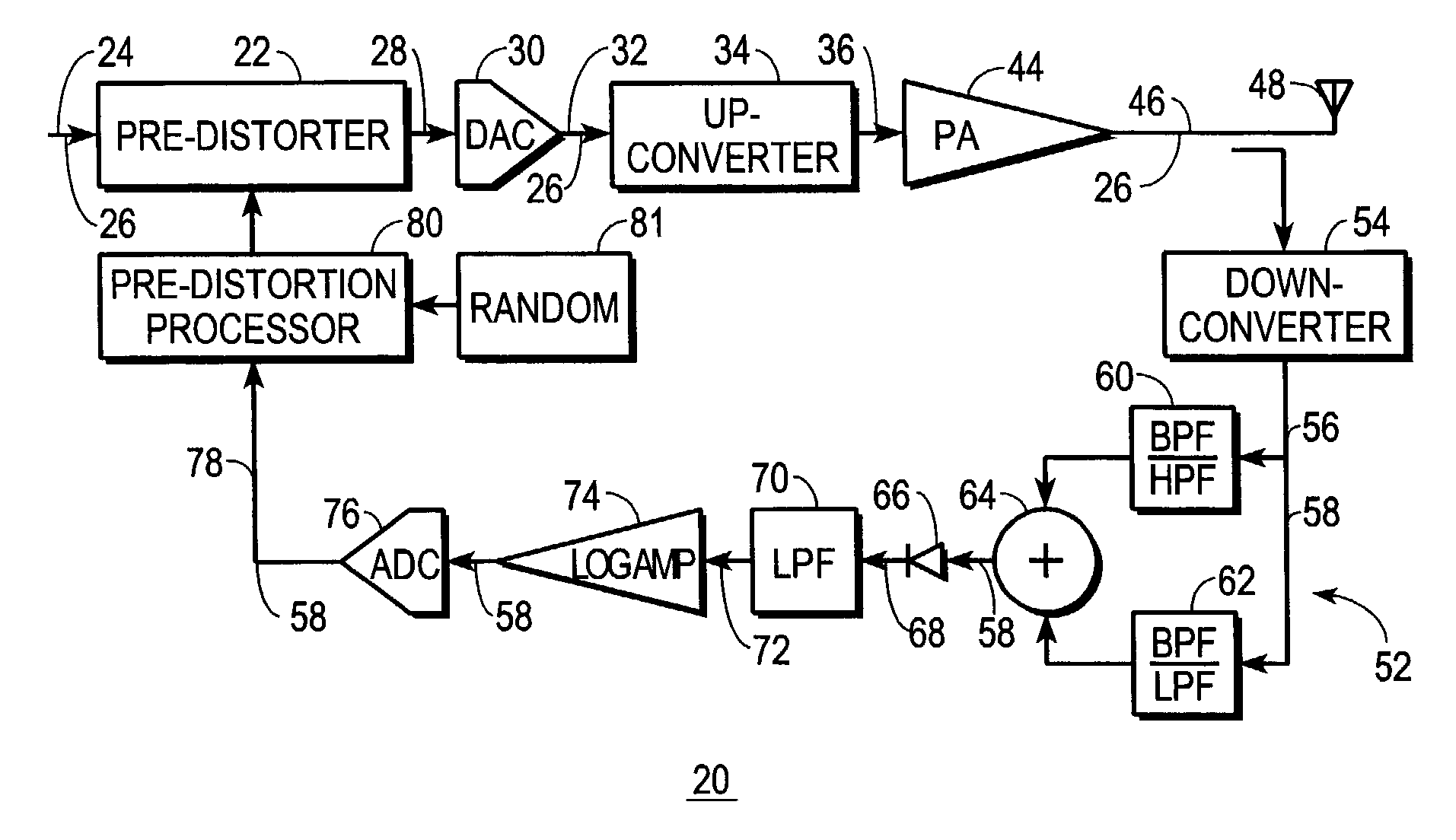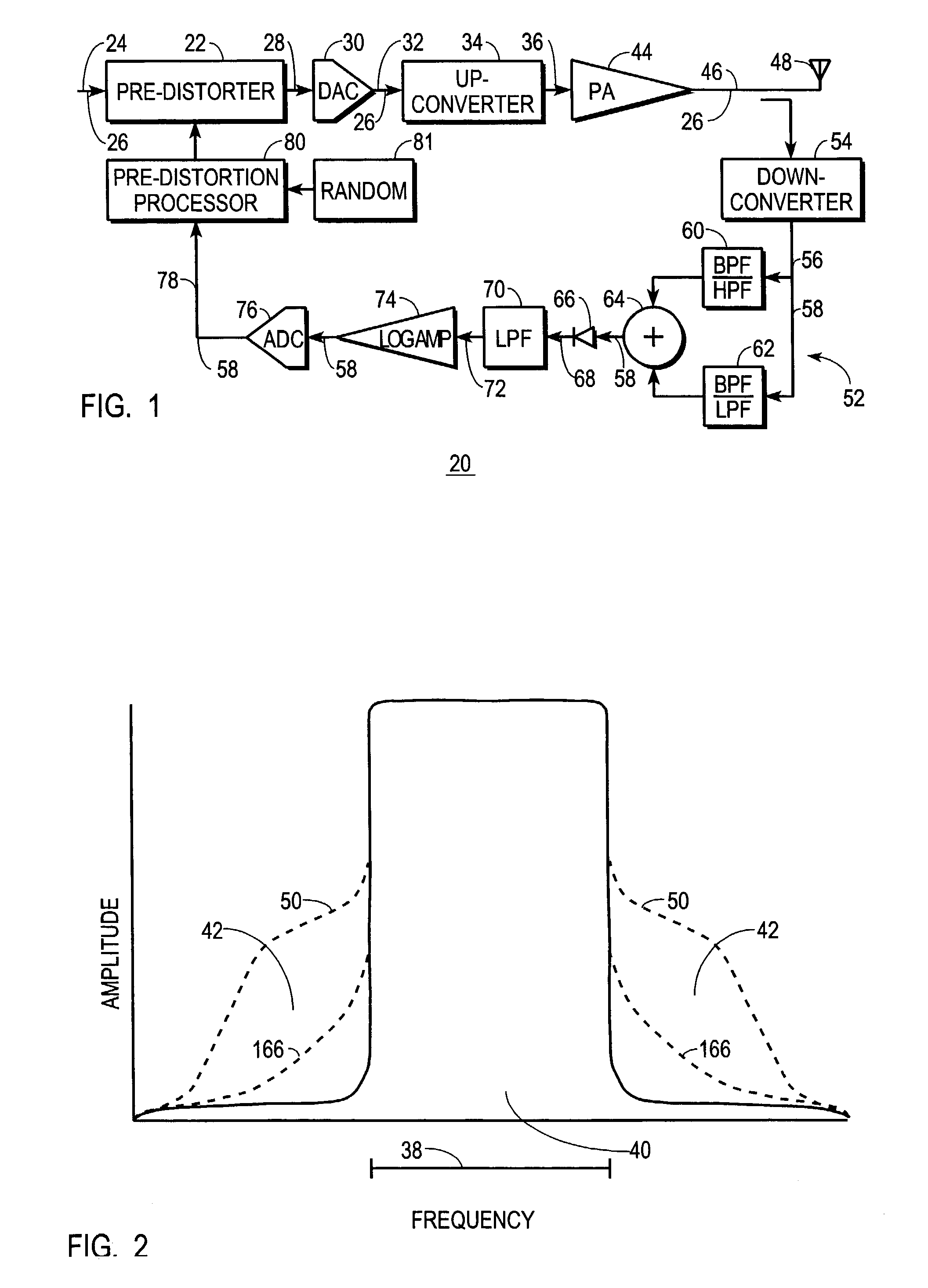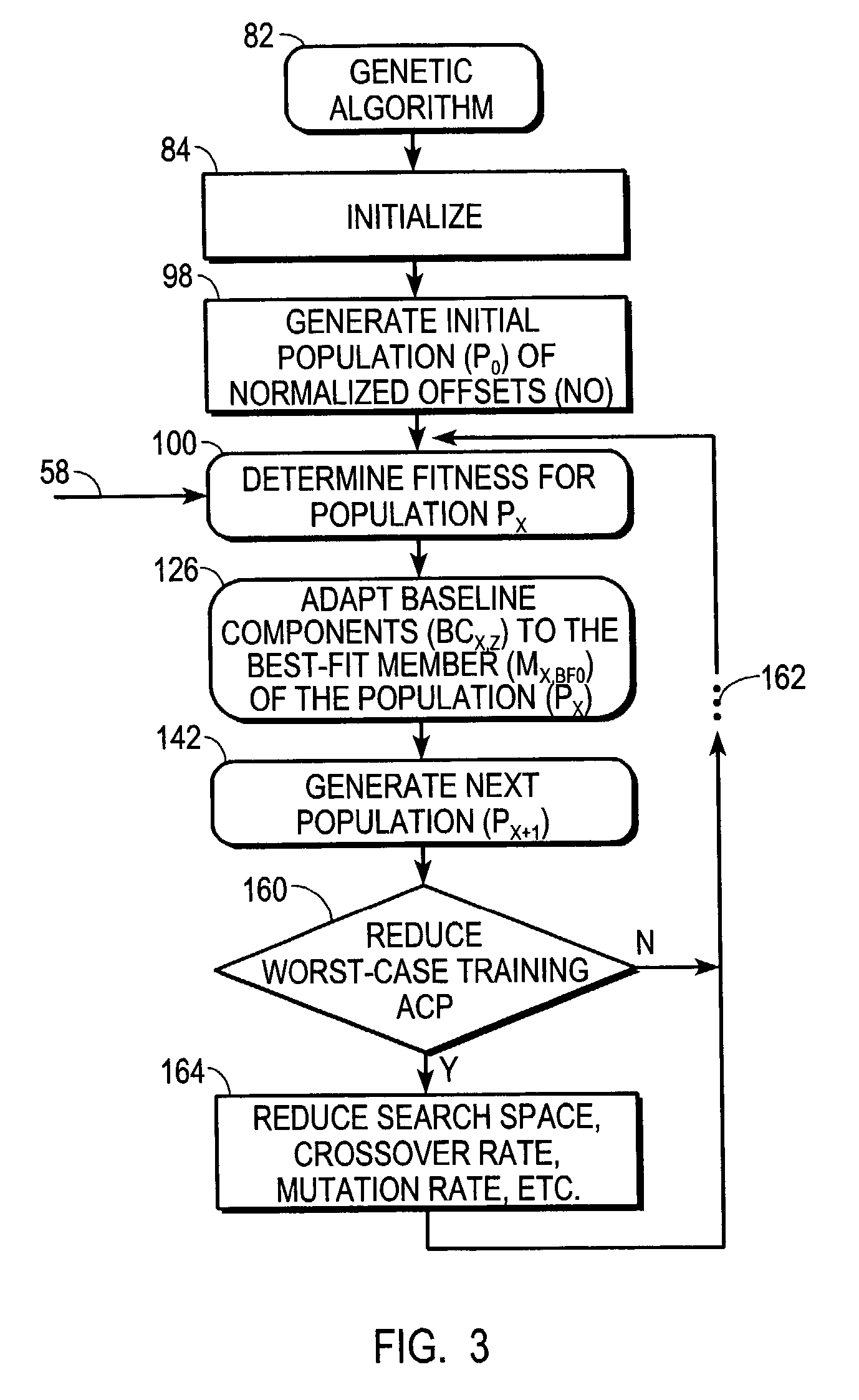Transmitter with limited spectral regrowth and method therefor
a technology of spectral regrowth and transmitter, which is applied in the direction of digital transmission, gain control, baseband system details, etc., can solve the problems of high performance, high cost, and high cost of power amplifier, and achieve limited spectral regrowth and method, reduce spectral regrowth, and limit adjacent channel power emissions
- Summary
- Abstract
- Description
- Claims
- Application Information
AI Technical Summary
Benefits of technology
Problems solved by technology
Method used
Image
Examples
Embodiment Construction
[0024]FIG. 1 shows a block diagram of a transmitter 20 configured in accordance with the teaching of the present invention. Transmitter 20 includes a pre-distorter 22 adapted to receive a modulated form 24 of a transmission signal 26 and transform the modulated transmission signal 24 in accordance with pre-distortion functions programmed therein. The modulated transmission signal 24 may be a digital communication signal expressed as a stream of quadrature data values. The modulated transmission signal 24 may have been modulated to convey digital data via phase mapping, via CDMA techniques, or the like; it may have been pulse shaped to spread the modulated energy for each unit interval over a number of unit intervals; and / or, it may have been compressed to reduce its peak-to-average ratio. But the precise processing applied to the modulated transmission signal 24 prior to its application at pre-distorter 22 is not a critical feature of the present invention.
[0025]Nor is the precise c...
PUM
 Login to View More
Login to View More Abstract
Description
Claims
Application Information
 Login to View More
Login to View More - R&D
- Intellectual Property
- Life Sciences
- Materials
- Tech Scout
- Unparalleled Data Quality
- Higher Quality Content
- 60% Fewer Hallucinations
Browse by: Latest US Patents, China's latest patents, Technical Efficacy Thesaurus, Application Domain, Technology Topic, Popular Technical Reports.
© 2025 PatSnap. All rights reserved.Legal|Privacy policy|Modern Slavery Act Transparency Statement|Sitemap|About US| Contact US: help@patsnap.com



